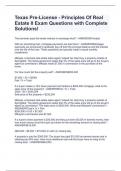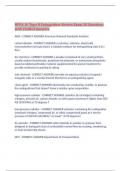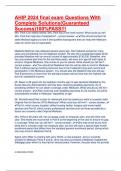Exam (elaborations)
TEST BANK FOR FOCUS ON NURSING PHARMACOLOGY 7THEDITION BY KARCH QUESTIONS AND ANSWERS
- Module
- Institution
- Book
TEST BANK FOR FOCUS ON NURSING PHARMACOLOGY 7THEDITION BY KARCH QUESTIONS AND ANSWERS. VERIFIED 1. A nurse working in radiology administers iodine to a patient who is having a computed tomography (CT) scan. The nurse working on the oncology unit administers chemotherapy to patients who have cancer....
[Show more]












